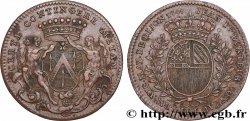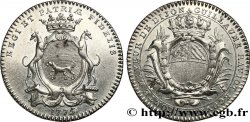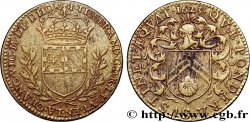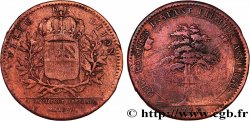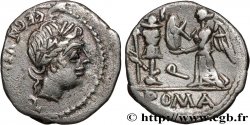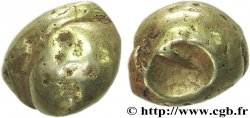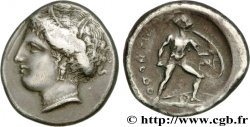fjt_059600 - DIJON (MAIRES DE ... et divers) Pierre Canquoin, prévôt de la Monnaie de Dijon 1593
380.00 €约 3165.40 CNY
数量
加入购物车

种类 Pierre Canquoin, prévôt de la Monnaie de Dijon
日期: 1593
材质 copper
直径 28,5 mm
模子方针 6 h.
重量 4,31 g.
侧面 lisse
稀少度 R3
关于品相的说明
Belle patine vert sombre. Flan légèrement voilé et quelques petits coups sur la tranche mais document très intéressant
出版目录中的项代码 :
正面
正面的文字 +. PIERRE. CANQVOIN. PREVOST. DE. LA..
正面的说明书 Au milieu d’un cartouche fleuronné dans une couronne de laurier : MONNOIE/ DE DIION/ 1593.
背面
背面的文字 +. LABORARE * ET * LETARI (FLEURS).
背面的说明书 Écu armorié entre deux tiges de rosier fleuries portant deux étoiles, un coin de droit et de revers ainsi qu’un marteau.
背面的翻译 (Travailler d’abord, se reposer ensuite).
评论
Pierre Canquoin, prévôt de la Monnaie de Dijon fut chargé de l’analyse des pièces que les Politiques faisaient forger à Saint-Jean-de-Losne. Au revers de son jeton, on remarque en manière d’armoiries, six pièces de monnaie, des coins, un marteau et une fleur qui s’épanouit au centre. Rappelons que la ville de Dijon refusa de reconnaître Henri IV et que la Monnaie de Dijon fabriqua au nom de Charles X jusqu’en 1595, date à laquelle la ville se soumet à Henri IV. Celui-ci, pour concurrencer cette ville ligueuse avait ouvert un atelier à Saint-Jean-de-Losne (puis à Semur) avec les mêmes différents que ceux de l’atelier de Dijon.
Pierre Canquoin, provost of the Dijon Mint, was responsible for analyzing the coins that the Politicians had forged in Saint-Jean-de-Losne. On the reverse of his token, we notice, in the manner of a coat of arms, six coins, dies, a hammer and a flower blooming in the center. Let us recall that the city of Dijon refused to recognize Henry IV and that the Dijon Mint manufactured in the name of Charles X until 1595, when the city submitted to Henry IV. The latter, to compete with this League city, had opened a workshop in Saint-Jean-de-Losne (then in Semur) with the same differences as those of the Dijon workshop.
Pierre Canquoin, provost of the Dijon Mint, was responsible for analyzing the coins that the Politicians had forged in Saint-Jean-de-Losne. On the reverse of his token, we notice, in the manner of a coat of arms, six coins, dies, a hammer and a flower blooming in the center. Let us recall that the city of Dijon refused to recognize Henry IV and that the Dijon Mint manufactured in the name of Charles X until 1595, when the city submitted to Henry IV. The latter, to compete with this League city, had opened a workshop in Saint-Jean-de-Losne (then in Semur) with the same differences as those of the Dijon workshop.








 对产品描述纠错
对产品描述纠错 打印
打印 分享我的选择
分享我的选择 提问
提问 Consign / sell
Consign / sell
 产品介绍
产品介绍
